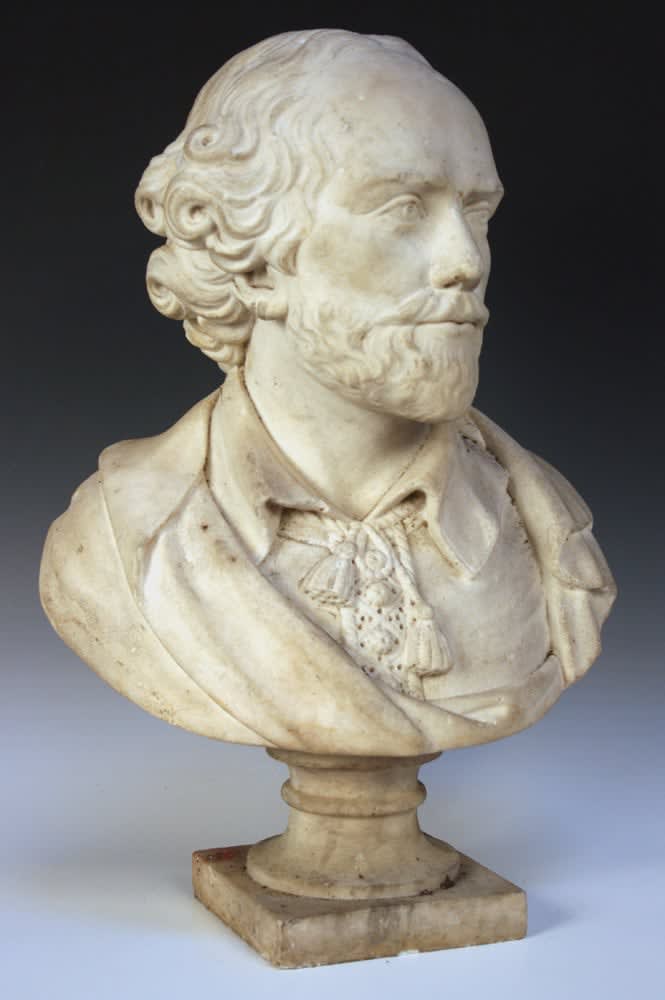
After Louis Francois Roubiliac
Portrait Bust of William Shakespeare, 18th Century
Marble
52 cm (20.5 inches) high (including plinth)
Philip Mould & Co.
To view all current artworks for sale visit philipmould.com The burgeoning fame of William Shakespeare, galvanised by actors such as David Garrick and events such as his Shakespeare Festival...
To view all current artworks for sale visit philipmould.com
The burgeoning fame of William Shakespeare, galvanised by actors such as David Garrick and events such as his Shakespeare Festival at Stratford upon Avon in 1769, saw the playwright firmly established as one of the leading national icons by the nineteenth century, which unassailable position ‘The Bard’ has retained ever since. This marble bust would perhaps have been produced to sit among a pantheon of worthies in a patron's library, or in a garden temple like Garrick’s own life-sized statue of Shakespeare by Roubiliac [British Museum], after which the present bust is taken. In the late eighteenth century, Rysbrack and Roubiliac, together with sculptors such as Cheere and Scheemakers, competed to create the definitive portrait bust of Shakespeare. All of their efforts were modelled on the ‘Chandos’ life portrait [now in the National Portrait Gallery] and the near contemporary bust over Shakespeare’s tomb at Stratford erected by his friends.
The burgeoning fame of William Shakespeare, galvanised by actors such as David Garrick and events such as his Shakespeare Festival at Stratford upon Avon in 1769, saw the playwright firmly established as one of the leading national icons by the nineteenth century, which unassailable position ‘The Bard’ has retained ever since. This marble bust would perhaps have been produced to sit among a pantheon of worthies in a patron's library, or in a garden temple like Garrick’s own life-sized statue of Shakespeare by Roubiliac [British Museum], after which the present bust is taken. In the late eighteenth century, Rysbrack and Roubiliac, together with sculptors such as Cheere and Scheemakers, competed to create the definitive portrait bust of Shakespeare. All of their efforts were modelled on the ‘Chandos’ life portrait [now in the National Portrait Gallery] and the near contemporary bust over Shakespeare’s tomb at Stratford erected by his friends.
Be the first to hear about our available artworks
* denotes required fields
We will process the personal data you have supplied in accordance with our privacy policy (available on request). You can unsubscribe or change your preferences at any time by clicking the link in our emails.